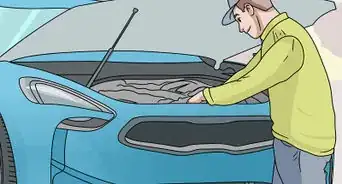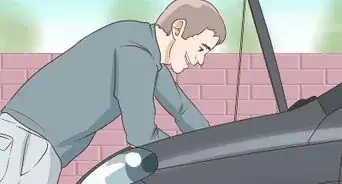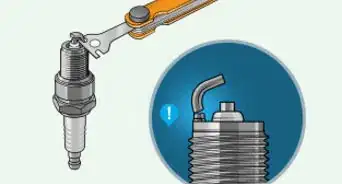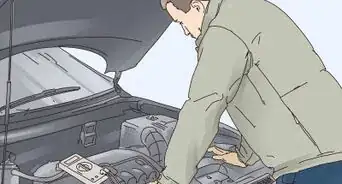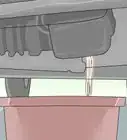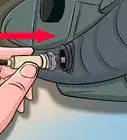X
wikiHow is a “wiki,” similar to Wikipedia, which means that many of our articles are co-written by multiple authors. To create this article, 11 people, some anonymous, worked to edit and improve it over time.
This article has been viewed 144,764 times.
Learn more...
The belts in your car's engine drive such components as the air conditioning compressor, power steering pump, alternator and water pump. Older cars used separate V-belts for each component, while newer cars use a single serpentine belt to drive them all. Belts wear and tear over time, and a belt's failure could mean serious damage to the engine or its systems. You need to check your belts on a regular basis; here's what to look for.
Steps
-
1Listen for squealing sounds from the engine when you drive. These sounds likely mean one or more belts are worn, loose or damaged.
-
2Check belts for signs of wear. You need to do more than just visually inspect the belts. Pinch, squeeze and twist them, looking for cracks, fraying, splits or brittle places.[1]
- On a serpentine belt, also look for missing grooves or places where the belt's layers have separated.[2]
Advertisement -
3Check your belts for places where the rubber is slick or glazed in appearance. Slick spots can cause a belt to slip and may be precursors to overheating and cracking.
-
4Inspect the pulleys. Look for a buildup of rubber deposits, as well as worn spots that could catch the belt and cause it to break.[3]
- Also check the belts' alignment on the pulleys. They should line up straight on the pulleys.
-
5Check the belt tension. Check the tension on the longest length of the belt; there should be no more than one-half to one inch (1.25 centimeters to 2.5 centimeters) of give.[4]
Advertisement
Community Q&A
-
QuestionI have a dead rat in my car and it stinks. What can I do to get the smell out?
 Community AnswerGet the rat out. Then wash your engine with petrol or a chemical called prepsol -- it's a cleaning product.
Community AnswerGet the rat out. Then wash your engine with petrol or a chemical called prepsol -- it's a cleaning product. -
QuestionHow can I check the tension on a belt?
 Community AnswerTwist it if you do not have a tensioner test. The longer you can twist it, the belt is loose, the less it twists, the belt is good. You must have a good vision of comparing.
Community AnswerTwist it if you do not have a tensioner test. The longer you can twist it, the belt is loose, the less it twists, the belt is good. You must have a good vision of comparing.
Advertisement
Warnings
- If the V-belt for your water pump breaks, your engine temperature will rise rapidly. If the V-belt for your alternator breaks, your alternator no longer will supply power to your battery to keep it charged, and the compressor for your air conditioner will also quit. If your car has a serpentine belt and it breaks, all these things will happen. If your car starts to overheat, pull over immediately.⧼thumbs_response⧽
- Many of the new composite belts will not show signs of wear until they break.⧼thumbs_response⧽
Advertisement
References
- ↑ https://www.consumerreports.org/car-repair-maintenance/how-to-inspect-car-belts-and-hoses/
- ↑ https://www.familyhandyman.com/automotive/car-maintenance/serpentine-belt-how-to-check-for-wear/
- ↑ https://www.youtube.com/watch?v=axAltpW8wR4
- ↑ https://www.howacarworks.com/electrical-systems/checking-adjusting-and-refitting-drive-belts
- ↑ https://www.knowyourparts.com/technical-resources/engine/when-to-replace-serpentine-belts/
- http://www.cartalk.com/content/features/Summer-Driving-Tips/cooling.html
About This Article
Advertisement

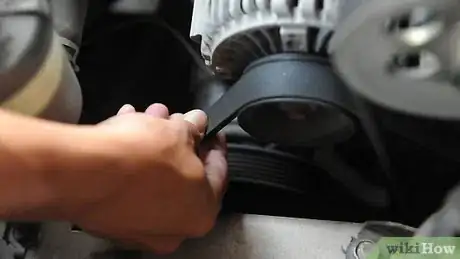
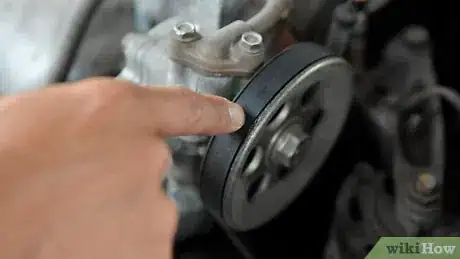
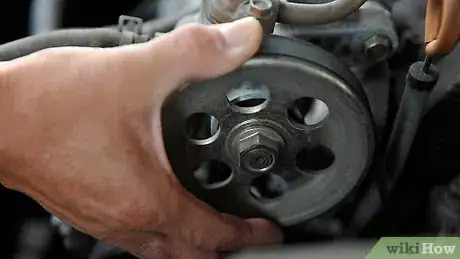
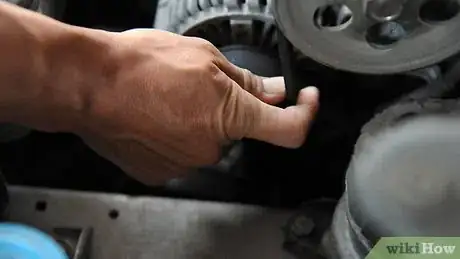




-Beetle-Step-5-Version-3.webp)
